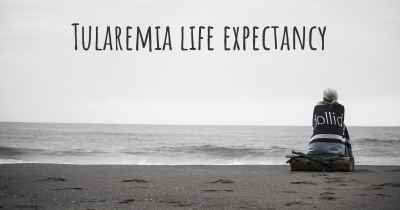Living with Tularemia. How to live with Tularemia?
Can you be happy living with Tularemia? What do you have to do to be happy with Tularemia? Living with Tularemia can be difficult, but you have to fight to try to be happy. Have a look at things that other people have done to be happy with Tularemia

Living with Tularemia
Tularemia, also known as rabbit fever or deer fly fever, is a rare infectious disease caused by the bacterium Francisella tularensis. It is primarily transmitted to humans through contact with infected animals, insect bites, or exposure to contaminated water or soil. While tularemia can be a serious illness, with proper precautions and medical care, individuals can effectively manage and live with the condition.
1. Seek Medical Attention
If you suspect you have been exposed to tularemia or experience symptoms such as fever, fatigue, swollen lymph nodes, or skin ulcers, it is crucial to seek medical attention immediately. Early diagnosis and treatment are essential for a successful recovery.
2. Follow the Prescribed Treatment
Upon diagnosis, your healthcare provider will prescribe appropriate antibiotics to combat the tularemia infection. It is vital to strictly adhere to the prescribed treatment regimen, including the recommended dosage and duration. Completing the full course of antibiotics is crucial to ensure the complete eradication of the bacteria from your body.
3. Practice Good Hygiene
Practicing good hygiene is essential to prevent the spread of tularemia and protect yourself and others. Wash your hands thoroughly with soap and water, especially after handling animals, soil, or potentially contaminated materials. Avoid touching your face, mouth, or eyes without washing your hands first.
4. Protect Yourself from Insect Bites
Tularemia can be transmitted through insect bites, particularly from ticks, deer flies, and mosquitoes. To reduce the risk of exposure, take precautions such as:
- Wearing long sleeves, pants, and socks when spending time outdoors in areas where tularemia is prevalent.
- Using insect repellents containing DEET or picaridin on exposed skin and clothing.
- Inspecting your body and clothing for ticks after outdoor activities and promptly removing any ticks you find.
5. Avoid Contact with Infected Animals
Tularemia can be contracted through direct contact with infected animals or their carcasses. Take the following precautions:
- Avoid handling sick or dead animals, especially rabbits, rodents, and other small mammals.
- If you must handle animals, wear protective gloves and use appropriate tools.
- Ensure proper disposal of animal carcasses by contacting local health authorities or animal control.
6. Be Cautious with Water and Soil
Tularemia can also be acquired through contaminated water or soil. Take the following measures:
- Avoid drinking untreated water from lakes, rivers, or streams.
- When gardening or working with soil, wear gloves to minimize direct contact.
- Wash fruits and vegetables thoroughly before consumption.
7. Educate Yourself and Others
Stay informed about tularemia, its transmission, and preventive measures. Share this knowledge with your family, friends, and community to raise awareness and promote proactive measures to prevent the spread of the disease.
8. Follow Up with Healthcare Providers
After completing the prescribed treatment, it is important to follow up with your healthcare provider for any necessary check-ups or additional tests. Regular monitoring can help ensure your recovery and detect any potential complications.
Living with tularemia requires a combination of personal responsibility, adherence to medical advice, and preventive measures. By taking these precautions and staying vigilant, you can effectively manage the condition and minimize the impact on your daily life.








